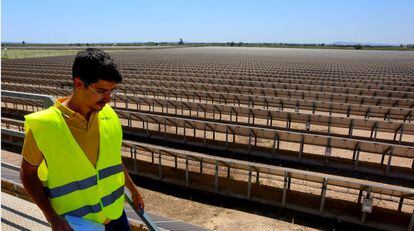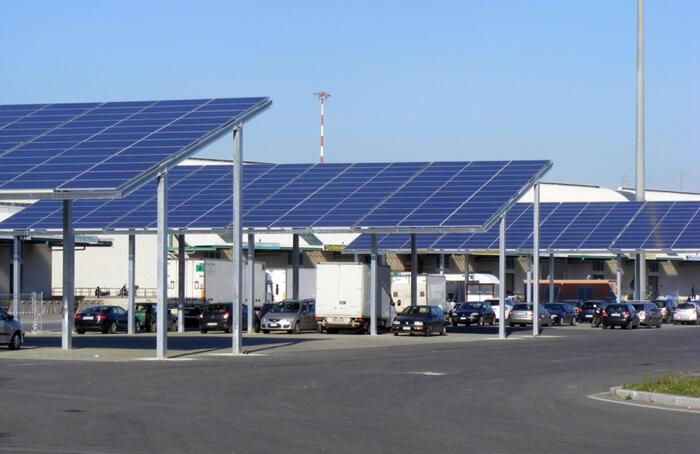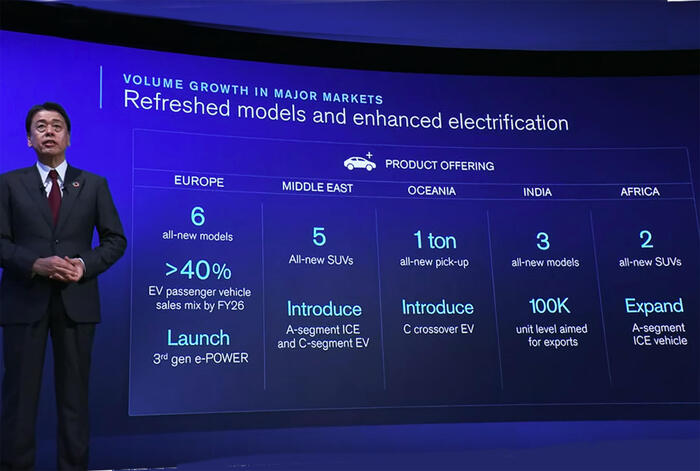The war that is ravaging Ukraine has highlighted the need to accelerate the processes to implement the transition towards a sustainable model.
Achieving energy sovereignty, a concept that seemed like a distant goal, has become a priority for the Generalitat Valenciana, which approved on April 22 a decree law with urgent measures aimed at setting a period of five years to achieve self-sufficiency Of the territory.
According to data from the Consell and Red Eléctrica Española (REE), the Valencian Community currently produces 66% of all the energy it uses.
Said consumption translated into 27,051 GWh during 2021, with less than 20% coming from renewable energies.
In terms of potential, investment in the development and implementation of clean energy is the commitment of the Consell, which sees the key to energy sovereignty in the 315 projects pending processing.
The firm commitment to Valencian research and development in fields such as green hydrogen, electric batteries and the photovoltaic industry, are the uncertain future towards which the territory is heading.
For Pedro Fresco, General Director of Energy Transition, investment in renewable energy is a train that cannot be missed.
“We have two options: remain withdrawn and be part of the third world or get on the forefront of change and lead this end of the historical cycle.
Projects such as the Volkswagen battery factory for electric vehicles in Sagunto, which will be operational in 2026, exemplify the potential of the Valencian Community to be part of technological change.
Either we manufacture the components of renewable energies or others will manufacture them”, explains Fresco.
At the moment, the reality of many of the projects that are still pending approval is far from the urgency with which the Administration wishes to dispose of them.
In this sense, Decree Law 1/2022, approved on April 22, is directed, which aims to speed up the processing of the 315 projects that are currently stuck in different processing phases and that would suppose an installed power of about 10,000 megawatts supplementary, between solar and wind energy.
Image of a solar garden in Crevillente.Joaquín de Haro
For Professor Tomás Gómez Navarro, director of the University Institute for Research in Energy Engineering (IUIIE) and member of the Chair of Energy and Urban Transition at the Polytechnic University of Valencia (UPV), the grounding is due to the fact that the public administration "is guarantor and must be convinced that the projects are of interest to the population from the point of view of the stability of the electricity grid and the market”.
However, he affirms, currently there are not enough public personnel to carry out these processes.
“Five years have passed and they have not provided more officials to the service.
To this must be added the concern of the authorities about the existence of speculators, which makes it move very cautiously and slowly.
The president of the Generalitat Valenciana, Ximo Puig, has pointed out on several occasions that the energy transition is one of the "great issues in this decade of opportunities".
Along these lines, the recent government reshuffle underpins the plans of the Socialists, who will first have to achieve validation in the Corts of the energy measures that their coalition partners, Compromís and Unides Podem, view with reluctance.
For the Valencian president this is an opportunity that cannot be missed and he is committed to putting photovoltaic plants “wherever, but putting them”.
Currently, the energy production of the Valencian Community depends largely on the Cofrentes nuclear power plant, which, according to REE data, generated 8,389 million kWh during 2021 and accounted for about half of the energy production of the community .
However, the energy produced by this plant, whose operation is authorized until November 30, 2030, is equal to solar and wind power since the European Commission classified gas and nuclear as renewable energy last February.
The Valencian Institute of Business Competitiveness (IVACE) recently published the study
Photovoltaic Use in the Valencian Community
, which indicates that of the total number of homes in the Valencian Community, around 31% are considered very favorable for self-consumption, which translates in around 600,000 homes with "medium-high" potential to self-generate their own energy expenditure.
The province of Valencia would present a greater potential for photovoltaic generation with more than 10,700 GWh per year, concentrating 60% of the total productive capacity in the industrial sector.
But in addition to residential there are two other energy consuming sectors.
Professor Gómez Navarro points out that these are industrial, residential and transport.
“In practice, we could aspire to cover the residential and industrial demand.
But, even so, we would still not be able to cover the demand of sectors such as transport”.
The professor is not entirely optimistic "because I think that technically and economically it is not yet possible."
old ghosts
This technological revolution will be a process that will leave winners and losers along the way.
In this sense, the representative of the Valencian Coordinator for the Rational Location of Renewable Energies, Julio Rodrigo, emphasizes the need to take urgent measures for decarbonization, but focuses on the problems that the Consell's direct commitment to photovoltaic energy and wind can suppose.
“The hand has been opened so much and so many facilities have been put in place to build solar parks, that investment funds have come from all over the world who have seen that the situation is prone to speculation.
What we see is that the installation of large photovoltaic plants is not going to represent a drop in the price of electricity for consumers.
The bill would only go down if the energy generated by the plants in each town was dedicated to the consumption of the neighbors at zero price.
But that will not happen, these companies will connect to the grid, export energy abroad and charge us for it at market price”, says Rodrigo.
For Pedro Fresco, the route to follow is clear: “Over the next few years we have to do two things.
On the one hand, to continue massively installing renewables to produce the energy that we want not to import in the form of gas or oil.
The second step is that we have to be able to use that energy that we want to produce in our cars, in our houses... we have to change all the technology on which we base energy consumption and transform them so that they can work on electricity.
In short, we must replace processes that we cannot directly electrify at the moment”, affirms the general director of Energy Transition.
Exclusive content for subscribers
read without limits
subscribe
I'm already a subscriber


/cloudfront-eu-central-1.images.arcpublishing.com/prisa/JUSJMP3AZFFMVFE7EXS567CYJE.jpg)
/cloudfront-eu-central-1.images.arcpublishing.com/prisa/M2S3AFJ6F5EFJLWTULBFKAQJWQ.jpeg)





